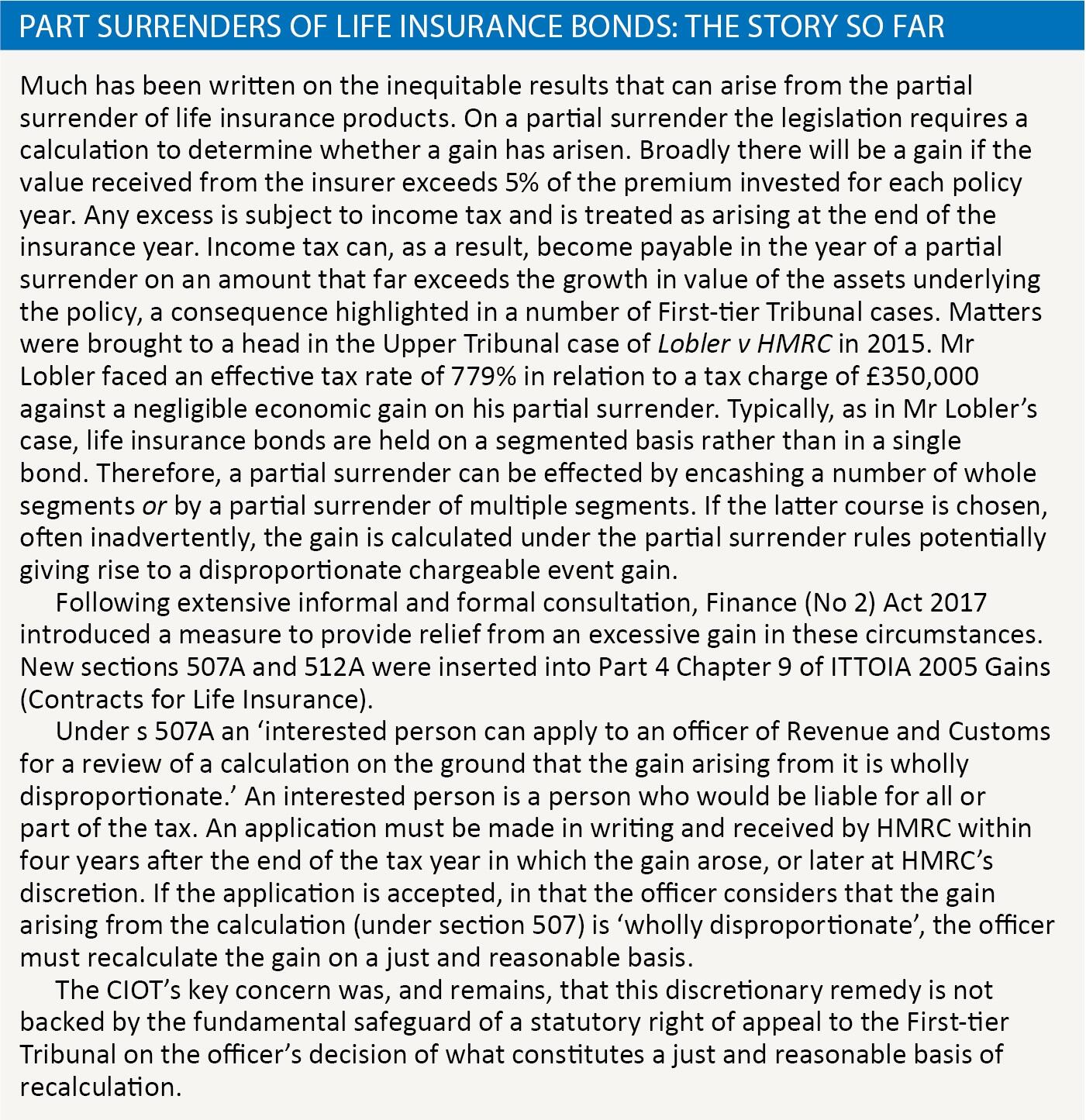Lobler mark 2: a failure of process?

Kate Willis examines the case of Thakoral Tailor v HMRC and its impact
Key Points
What is the issue?
Processes to alert taxpayers to a discretionary remedy, whether through Making Tax Digital or instructions or guidance, must be effective in reaching the taxpayers who may benefit from the remedy.
What does it mean to me?
Ensuring a fair balance of powers between tax collectors and the rights of taxpayers (both represented and unrepresented) is a part of a better, more efficient tax system.
What can I take away?
Guidance needs to be accessible to all users.
The First-tier Tribunal case of Thakoral Tailor v HMRC [2017] UK FTT 0845 (TC) is worrying on a number of levels. The unrepresented appellant, Mr Tailor, was in the words of the tribunal judge, Sarah Falk, ‘an elderly gentleman, who seemed to me to be both in difficult financial circumstances and to have been diagnosed with some form of cognitive impairment.’ Despite this, HMRC had been enforcing payment of the full amount of the tax on a chargeable event gain the appellant had incurred on partial surrenders of life insurance bonds, calculated in accordance with the much-criticised legislation as it stood prior to the enactment of ITTOIA s 507A inserted by Finance (No 2) Act 2017 (see box below). The HMRC presenting officer had apparently no knowledge of Lobler or the subsequent change in the law.

It is particularly concerning in the light of the efforts of the CIOT and LITRG, other stakeholders and HMRC to effect a change in the law that aims to mitigate the unfairness inherent in the statute and to eliminate the need for litigation in relation to disproportionate gains arising on the partial surrender of life insurance products. Indeed, it was implicit in the consultation process (see box below) that the new discretionary remedy, introduced by F (No 2) Act 2017 should mean that no substantive cases involving a disproportionate gain arising from the part surrender or part assignment of a life insurance policy would be brought before the courts in future because the discretionary remedy should pre-empt any need to bring the matter before the tribunal.
Procedurally the case of Thakoral Tailor v HMRC concerned applications by HMRC to strike out Mr Tailor’s appeal in relation to late payment of income tax, surcharges and interest. However, the underlying issue was the widely acknowledged unfairness in relation to the tax treatment of partial surrenders of life insurance policies.
The gains in Mr Tailor’s case arose on the partial surrender of life insurance policies in three tax years 2005/06, 2007/08 and 2008/09. The annual statements from the insurance provider confirmed that Mr Tailor had been taxed on amounts well in excess of his economic profit on the policies in question. It was also clear from the correspondence that the withdrawals were made in the form of partial surrenders across segmented policies, so precisely the same situation as in Lobler.
Unfortunately, as the tribunal noted, neither the change in the law nor the underlying issue of fundamental unfairness inherent in the taxation treatment of partial surrenders appears to have been acknowledged by HMRC in dealing with Mr Tailor’s affairs.
One of the CIOT’s concerns in discussions with HMRC in relation to the operation of the new discretionary remedy was the question of how an individual might be alerted to its existence, and how could an unrepresented taxpayer be assisted in understanding the complexities of their situation?
The main guidance on the discretionary remedy is to be found in HMRC’s Insurance Policyholder Taxation Manual at IPTM3596. However, the detailed guidance, although helpful once found and absorbed, is not easily accessible by a taxpayer, particularly one without representation.
There is a paragraph in the updated HS320 Self-Assessment helpsheet: Gains on UK life insurance policies that signposts the application process: ‘If, following a part surrender (or part assignment) of a policy, the persons liable to tax on the gain consider that the gain arising is wholly disproportionate they can apply to HMRC to have the gain recalculated on a just and reasonable basis. Wholly disproportionate gains tend to arise early in the life of a policy often because policyholders have taken cash from their policy that is far in excess of their 5% tax deferred allowance. You can find more information on who can apply and the application process in the IPTM.’
However, it is not readily apparent that the specific technical guidance is at IPTM3596. There are over 200 individual pages of content in the IPTM manual. It seems unlikely that even the most determined layman would find it easily.
The number of individuals who are expected to apply for a recalculation of a ‘wholly disproportionate’ gain (a high bar) is very small, probably less than 10 a year. However, these cases are likely to concern individuals who have not fully understand the products they have been sold. It is for this small number of often unsophisticated or vulnerable individuals, who may have made a mistake in the operation of their policy (by partially surrendering multiple segments rather than fully surrendering a number of segments) for whom the legislation, after all, is designed to provide a remedy. The remedy will not be effective if the class of people at whom it is directed are, by their nature, unlikely to learn of its existence through technical guidance.
The legislation states that the application is to be made by the person who will suffer the tax on the disproportionate gain. Clearly whether an application can be made will be dependent on the facts of each case. However, it would seem logical for HMRC to alert taxpayers in this position, particularly those who are unrepresented, to the ability to apply for a recalculation.
How might this be done?
- Perhaps by including an instruction to HMRC officers to that effect in the IPTM. An instruction would not pre-judge the application, it would merely ensure that an officer would alert a taxpayer that the discretionary remedy is available. An HMRC officer dealing with a case of this nature is likely to be well placed to determine whether the ability to apply should be at least flagged to the taxpayer.
- In the longer term, utilising the benefits of Making Tax Digital may allow for some sort of prompt or flag via an individual’s Personal Tax Account so that a taxpayer is alerted to the potential remedy. Similarly, if a gain has been recalculated on a partial surrender/assignment as a result of the exercise of the remedy, the taxpayer could be subsequently alerted to the fact that the gain arising on final surrender of the policy needs to reflect the earlier recalculation.
In the absence of accessible guidance designed with the users in mind and HMRC taking proactive steps to alert taxpayers in this position to the statutory remedy, it would appear that Mr Tailor’s unfortunate experience (and that of other taxpayers in similar circumstances) could be repeated in another case simply because of a failure to alert a similar taxpayer to the ability to apply for a review under s 507A. This consequence would be surely entirely contrary to the policy intent behind the introduction of the discretionary remedy in ITTOIA 2005 s 507A. A failure to take appropriate proactive steps in such cases may be regarded quite validly as distorting the balance between the powers of HMRC and the rights of taxpayers, particularly those who are unrepresented and/or vulnerable.


